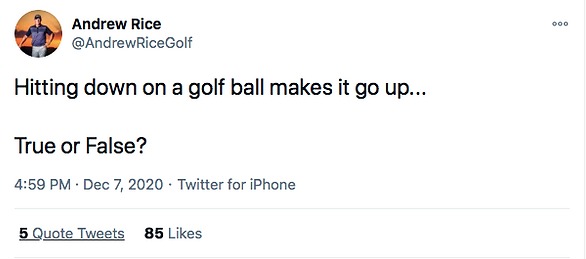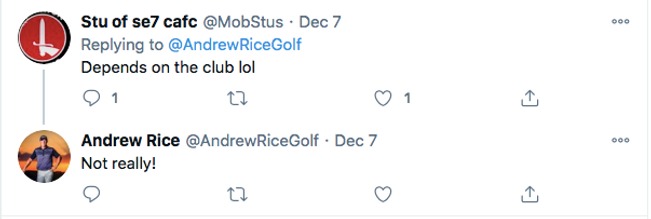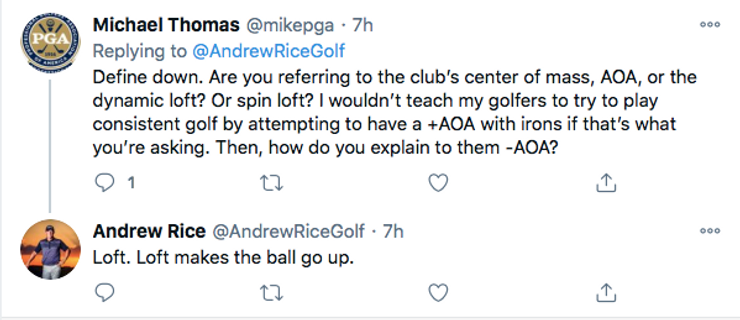It’s really helpful to understand why the golf ball flies the way it does, yet it is rare that a new student already possesses this understanding when I meet them for their first lesson. Why is that? Trackman and other launch monitors have been around for well over 10 years now, and many golf coaches have completely moved on from discussing ball flight with their players to discussing forces and torques. Is it wise to assume golfers have a handle on the very basics?
A recent tweet from coach Andrew Rice put this into perspective for me, he asked the question below.

and he received replies like this…

and this….

and this…

Even PGA members were giving confusing answers to a simple question.
As Andrew said, “Loft. Loft makes the ball go up”.
That this is such a complicated question for so many people shocked me, and told me I needed to make sure that my students had clear concepts of why the ball flies the way it does. Read what is below out loud, repeat it as many times as you need to memorize it.
The golf ball starts in the direction the loft of the club is pointing at impact.
The golf ball curves when there is a difference between the club-face angle, and the club-path at impact.
If the club-path is left of the club-face, it curves to the right.
If the club-path is right of the club-face, it curves to the left.
If a ball is struck on the toe of the club it tends to lessen a slice and exaggerate a hook.
If a ball is struck on the heel of the club it tends to lessen a hook and exaggerate a slice.
This gets you most of the way in understanding why your ball flies the way it does. It doesn’t explain every little intricacy of ball flight and club delivery. It gets you most of the way there, with minimal investment. Every golfer should be able to internalize this.
With this knowledge, you can quickly assess why your golf ball sliced fifty yards into the trees, and when you want to fix that – you come to me 😉
